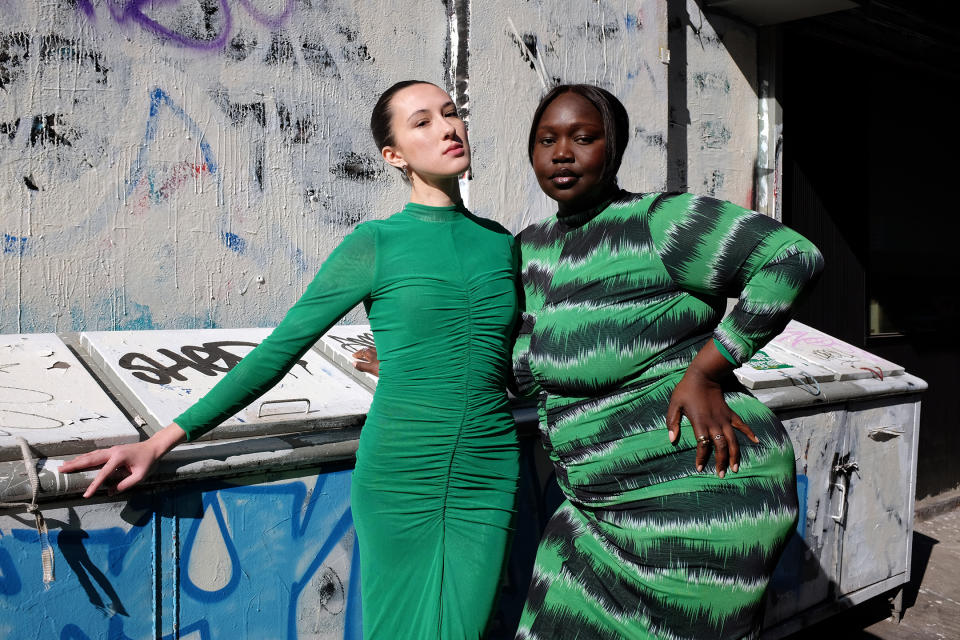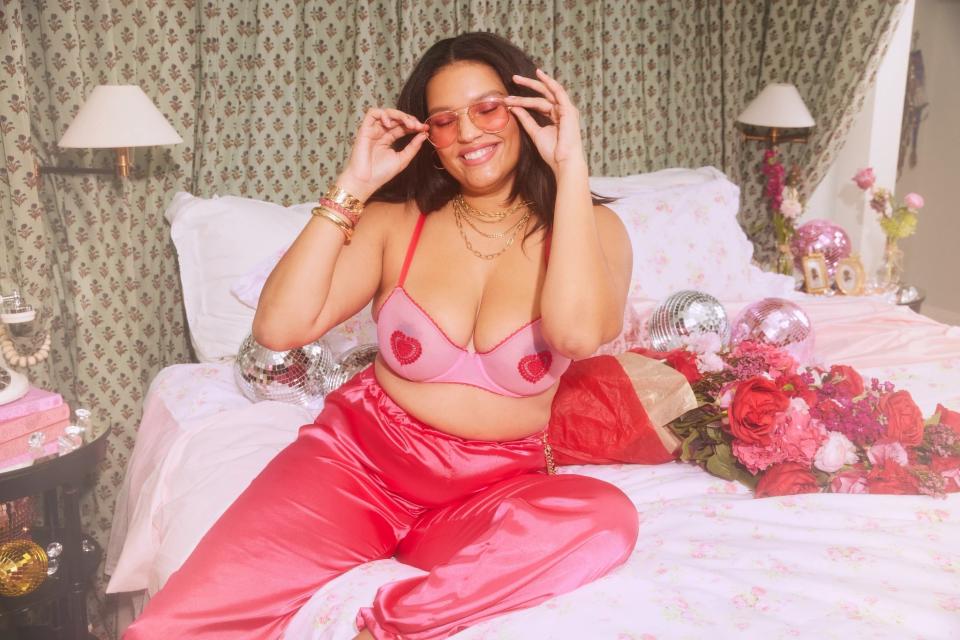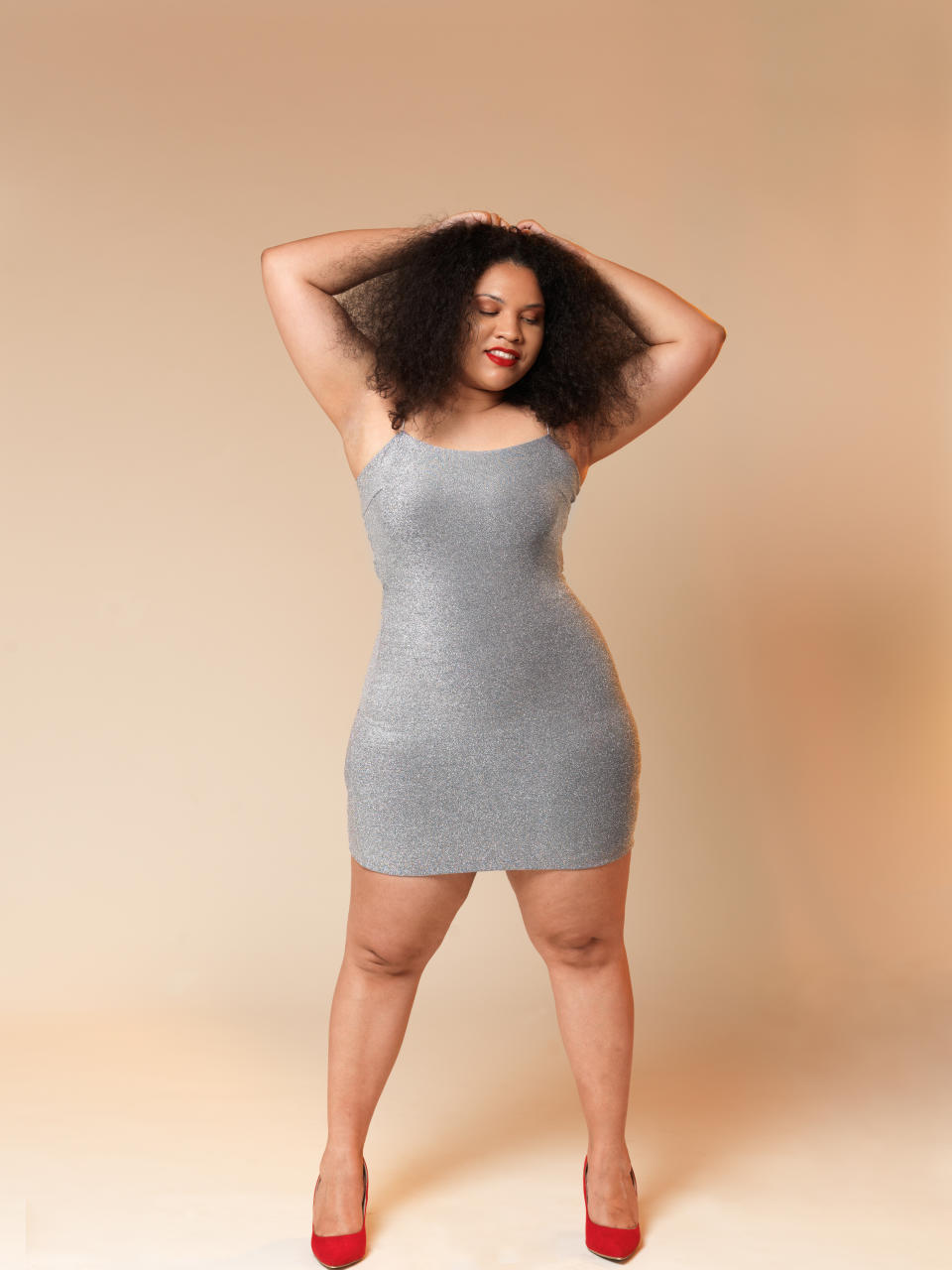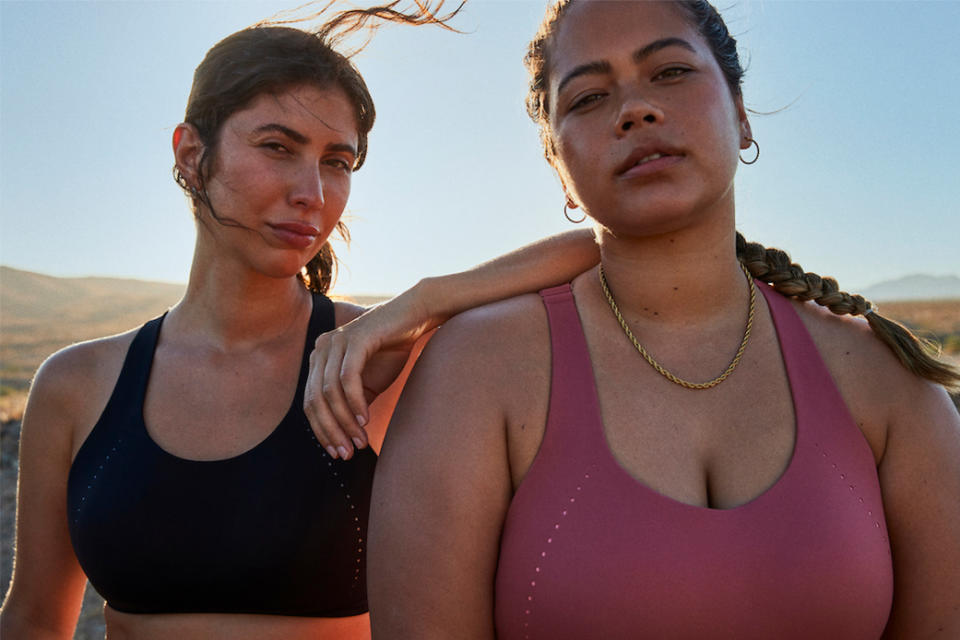Ozempic Not Shrinking Plus-Size Market—Yet

Ozempic, a GLP-1 weight-loss drug, has users losing pounds, while retailers work to ensure they’re not losing profits.
Morgan Stanley estimates that 7 percent of the U.S. population—or 24 million people—will be taking Ozempic or a comparable drug, like Wegovy, by 2035.
More from Sourcing Journal
While that’s already a staggering figure, it doesn’t take into account other nuances. In 2022, children accounted for 22 percent—or about 70.4 million people—of the U.S.’s population; Ozempic and other GLP-1 drugs have not yet been approved for people under the age of 12, and Ozempic’s site notes that it is “not known” whether the drug is safe and effective for those under 18.
If children are excluded from the equation, the remaining U.S. population lingers around 249.6 million people. If 24 million of those adults are taking Ozempic by 2035, that would mean that around 10 percent of the adult population in the U.S. would be taking some form of weight-loss drug.
Data shows women say they have more of an interest in taking pound-shaving presciptives than men. KFF, a health policy entity, published research in 2023 that claimed 51 percent of American women said they would be interested in taking a prescription medication for weight loss, as compared to 38 percent of their male counterparts.
But the drugs, which work by suppressing users’ appetites, currently have a prohibitive cost for those not taking them for their initially intended use: diabetes. The list price for Ozempic ranges from $900 to $1,300, on average, every four weeks. For those paying sticker price for the drugs, that means they could be shelling out between $11,700 and $16,900 annually for the panacea.
The median household income in the U.S. came in at just under $75,000 in 2022, per Census data.
That could be why Ozempic, among experts, celebrities and the general public, has been considered the “rich person’s drug.” Celebrities like Sharon Osbourne, Tracy Morgan, Chelsea Handler and others have admitted to trying the drug, as have influencers like Remi Bader.

The idea that a significant proportion of U.S. adults could soon be using the drugs has brought to life a new type of “economy” that experts call “the Ozempic Economy.” The term refers to the ways in which those hungry for Ozempic could affect various industries’ profits, offerings and marketing.
Affected industries include wellness and health, consumer packaged goods (CPG) and, notably, fashion and apparel.
Size-inclusive brands see no customer change
Even as the Ozempic obsession continues to creep up, brands that have built their value propositions on size inclusivity said they have not seen any deviation from their normal size curves.
Wray Serna, founder of Wray NYC, a small brand that carries sizes from XXS to 6X, said despite the interest in weight-loss drugs, her value proposition remains the same.
“My customer has not changed with the Ozempic surge, nor does it seem—from what we’re looking at and what we’re seeing—that our customer has any interest in losing weight,” she said. “Our popular sizes are still 1X through 3X, and our 4X, 5X and 6Xes are still consistently selling, and we have no plans of reducing those sizes at all.”

But Serna noted her business decision to keep stocking fringe sizes in her assortment hasn’t been received well by some.
“We’re getting a lot of pushback from shareholders and investors to scale back our sizing because what it looks like from a numbers standpoint is risk,” she said. “But ethically, it doesn’t work for me to scale those sizes back, so I’m fine taking the risk at the end of the day because I’m the majority shareholder of the company.”
Ranjan Roy, the vice president of strategy for Victoria’s Secret-owned Adore Me, said the intimates brand has not seen a decrease in plus-size buyers.
“Plus size is just around one-third of our business, and we’ve seen no change in that in the last one year—so since Ozempic has started to become more prevalent, we have seen no change in the actual composition of revenue,” Roy told Sourcing Journal.

Roy also said that the brand has not seen any trend down across overall sizes. For that reason, he said, the Ozempic Economy has not affected inventory planning decisions to date.
Reverting back to old ways
Both Roy and Serna noted that even if Ozempic and other drugs do impact a significant proportion of the U.S. population, there will always be a need to fulfill for customers who do not wear straight sizes.
2022 data from Markets and Research shows that the plus-size women’s clothing market value stood at $193.9 billion in 2021. The research firm’s findings claim that the market will grow at a CAGR of 4.3 percent between 2022 and 2030.
Despite the potential for plus-size market growth, other, larger companies have dipped their toes into the size-inclusive market, then walked back the trials. Old Navy removed plus-size items from its store in 2022; M.M. LaFleur pulled back on its plus-size offerings in 2020 and Loft cut down its plus-size assortment in 2021.
Brands have also dropped plus-size models from the runway. Data from Tagwalk shows that at New York Fashion Week in 2023, the number of mid-sized and plus-sized models decreased by 24 percent, as compared with 2022.
Jessica Couch, a retail technology strategist and founder of Looks AI, said she believes this year’s edition of NYFW could be telling on whether brands will adjust their marketing and assortments to reflect smaller, skinnier body types.
“I think it’s happening now slowly but I think after Fashion Week, once these brands get a taste for who’s doing what and what did it look like and what did the celebrities have on, we’ll see an immediate shift,” Couch said. “I think, come March, we’ll know [if] the industry took the bait, or are people going to stand in their current niche and cater to their current customer base?”
Nora Kleinewillinghoefer, a partner at Kearney, said she has already seen a move away from size inclusivity in marketing materials.
That could be signaling red flags to investors, whom Serna said Wray NYC has been having trouble capturing lately.
“We get turned down for investments quite often because we won’t budge on our size inclusivity, so that’s something that’s a little bit of a hardship that I’ve been dealing with and working through, but there’s no point to having the company unless we offer all of the sizes,” Serna told Sourcing Journal.
Skinny silhouettes
If fashion does continue its reversion back to its skinny-centered ways, Couch said she foresees on-trend silhouettes changing to mirror the shift.

“Prior to this Ozempic phase, people were going after the hourglass and exaggerated hourglass figure—small waist, larger hips, larger bust. The best thing to create the hourglass figure was going to be tight clothes that emphasize the waistline and show off the curves of your body. We had the overuse of Lycra and four-way stretch fabrics.” she said. “I think what we’re going to see in fabric now is more woven items that drape. In the silhouette piece, a slender shape where there’s not going to be as much exaggeration between the waist and the hips.”
Couch said she expects to see more of an emphasis on creating elongated looks that suit a smaller body or attempt to lessen the illusion of curves.
Because trends constantly evolve in fashion, Couch said, those who are interested in remaining on trend stand to see immediate impact. For consumers who need to be price conscious, or consumers that remain utilitarian with clothing, the shift may not have a noticeable impact.
“The fashionistas who are more body positive and are not [wearing] smaller sizes will be probably have the biggest reaction because there’s there’s been so much work over the past few years to increase the awareness of body positivity and to embrace this group, and now we’re going to see the pendulum swing towards this idea of super slimness and being skinny as best,” Couch told Sourcing Journal.
Apparel’s potential to participate in a now-booming industry
Beyond mere trends, industry experts project several new, longer-lasting market opportunities could arise as a result of the Ozempic Economy.
Users of the drugs have shown a greater commitment to maintaining their physical health through exercise. And already, the market has begun responding to the newly created consumer demand. Equinox, the New York-based wellness company that offers luxury gyms and fitness classes, recently launched a workout plan specifically for gym goers taking Ozempic and Wegovy.
The launch parallels a larger trend in the health and wellness market. People using injectable weight-loss drugs are expected to consider new gym memberships and other fitness-related purchases, said Erin Schmidt, a researcher and analyst.
If that occurs, the athletic wear market could be seeing dollar signs, Schmidt noted.
“As individuals are on treatments [like Ozempic], their weight will be fluctuating, and it will go down. So there is a need for different clothing, new clothing. I think, in the short term, the first and most obvious category, at least that we’re seeing is in…activewear and the fitness clothing category,” Schmidt told Sourcing Journal.

Kleinewillinghoefer said she sees an opportunity in clothing that suits a consumer at multiple sizes, which she compared to maternity wear.
“I think transitional clothing could be a category that heeds more influx as people are on that [weight-loss] journey, because as you’re going down, you don’t want to invest so heavily for each point in your size journey, depending on how far you’re going. You may just want something that can accompany you for the time being, but make you feel confident as you’re on your journey,” she told Sourcing Journal.
Roy said, as of now, Adore Me has not seen an uptick in sales on its wire-free offerings, like sports bras, which he said could give consumers a bit of size flexibility. However, he said, it could be an opportunity for the brand.
Kleinewillinghoefer said brands looking to captivate a wide breadth of customers in their market need to ensure they show consideration for those not interested in taking weight-loss drugs, while simultaneously offering options to support consumers who do.
“Think about how do you not alienate your existing consumer that may not be jumping on the trend, while celebrating with the consumer that has chosen to go down that path…whether that is from a product perspective, whether that is a marketing perspective. Make sure you both celebrate with one, but also continue to support and serve the others.”

